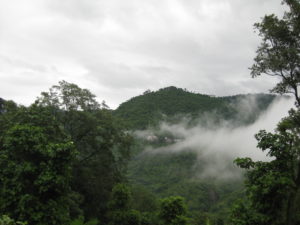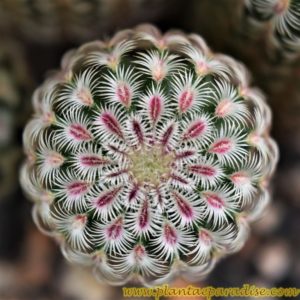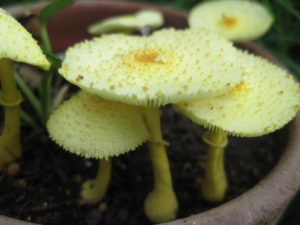(About : “Why cactus melt away and leave you in tears!”)
MONSOON WOES
 The monsoons are here. They give life to the planet. Birds and Animals rejoice. Earth decks up in green. Love is in the air. Grass grows, Insects increase, Frogs breed, Peacocks court, Birds nest, Dragon and Damsels hover and perform gravity defying aeros. Everyone is happy. In general it is HAKUNA MATATA time!
The monsoons are here. They give life to the planet. Birds and Animals rejoice. Earth decks up in green. Love is in the air. Grass grows, Insects increase, Frogs breed, Peacocks court, Birds nest, Dragon and Damsels hover and perform gravity defying aeros. Everyone is happy. In general it is HAKUNA MATATA time!
Everyone? No, not everyone! There is a strange group of people who are called the cactophiles. It is time for them to fret n pray. Every time they approach their most coveted treasure of Cacti and Succulents, their heart rate increases and knees become wobbly. They touch and feel their plants with tender loving fingers. Suddenly the finger goes right through the liquefied plant. Alarm Bells ! Sirens ! Panic Attack commences……
If you are here, on this page, you must be a cactophile and thus must be familiar with the above situation and also by now must have evolved many Drills, Maneuvers and Escape and Evasion tactics, so as not to get into such a situation. But I would still like to recapitulate some points for benefit of new recruits.
So why does a cactus rot in monsoon?
It is the same reason why food rots often in monsoon. Cactus is rich in food. A cactus stores food for lean periods, unlike other plants. It stores sugars . And food as we know is prone to rot. Rot arises from Fungi and Bacteria. Hot and humid …Easy for fungi to breed and spread. And that is how the cycle of life works… something dies and gives life to others and so on….Ah but recruits are not interested in philosophy. They are raring to grow bigger and better plants and jump into the arena to fight to death or win ‘ The Best Show Plant ‘ trophy.So a quick check list of Dos and Donts :-
- First and Foremost – Don’t Fret at losing a plant! Nothing is Permanent. And stop finding the person to affix blame upon.The person who has put you in this agony is the one who introduced you to cacti , but, thereafter it is a self-inflicted pain and journey.
- Secondly, follow these technical points judiciously :-
- Your cactus media should be POROUS AND WELL DRAINED. Water stagnation in pot WILL cause plants to liquefy, ie, simply rot and melt away. Remember fungi loves hot and humid weather and it loves to break down food and return to Earth what came from Earth.
- Cacti love rain water as it is acidic but there is a limit to how much rain a cactus plant can tolerate. So my advice is give them rain water but in monsoons give them overhead protection without killing or reducing light. This can be achieved by using poly sheets used for green house material.
- If cactus are bought in monsoons :-
- The seller should take care to uproot, clean the roots, dry the plant for good about 7 to 10 days, dehydrate it , remove extra roots or let the thinner roots fall off and callous and then ship. Do not insist on a root mass. Plant grows enough fibrous roots. But it is important to seal off all trauma of uprooting a plant.
- Thereafter, on arrival please keep the plant on a newspaper, dry under a fan if moisture has accumulated on plant. Keep it in shade for 4 to 5 days but in a airy place. This is to ensure callous formation takes place on bruises due to transit.
- Now plant it gently in porous medium. Do not press the media around the roots. Plant will settle on its own.
- Since, the plant has been in no light and poor light since long, do not place it in direct sunlight.
- Do not water the plant at all for 15 to 20 days or more if it is monsoons.
- Let the plant dehydrate. You will still see new growth on the plant when plant establishes it self. The media always has some moisture which the plant absorbs as soon as new root hairs are developed.
- A tough skinned compact, hard grown plant will be less prone to fungal attack. A well fed, pampered plant which is grown in mild sunlight is more susceptible to fungal attacks. So try and maximize light for plants without causing them sunburns. Something easily said than done! Feed and water them but do not over indulge them. Say, give more proportion of P an K rather than N when giving chemical fertilizers. As a rule we dehydrate our plants before the onset of long monsoons. Even insects do not like tough skinned plants.
- Fungicides. There is no statistical data on effects of fungicides but you will have to build up your own personal experience. Normally the guidelines followed by growers are :-
- Frequency of sprays depends upon humidity and temperature, ie, when the two join hands and become lethal to cacti.
- As a practice Systemic fungicides (Ones that are absorbed by plant body to fight fungal infections) are sprayed before monsoons.
- These can be alternated with Contact fungicides.
- Some brands offer a mix of both contact and systemic. Dosages are given as per brand and concentration of chemical used. Most are safe to plants even if overdosed a bit.
- Most cacti do not like copper based fungicides especially if used on cuts etc.
- Insecticides. Insects are vectors of fungal infection. One bite by a chewing caterpillar or a pierce by proboscis of a sucking insect is enough to carry fungal infection. The plant becomes brown and soft and the fungus spreads through out the plant liquefying it. So in essence, either cover your plants with an insect net or spray them with insecticides. Again frequency and duration depends upon the local conditions.

But as a rule you must spray regularly through out the monsoons and a some weeks prior to it. Both types of insecticides are available, ie, Systemic and Contact.
- Cure of infected plants. Any plant infected by fungus cannot be simply cured by spraying fungicides alone. The rotten part has to be cut away and dried till it callouses fully. It may take 7 days to 2 months, depending upon the type of plant and surface are exposed by cutting. Here is how to do it :-
- If a plant is losing condition or you feel it has become soft, or not growing at all, gently press to see if any soft areas or oozing areas. Also, if plant does not grow in spite of ideal conditions, check for root rot.
- If rot is seen, then cut off rotten portion by using a clean sharp knife. Clean means wiped with a tissue soaked in alcohol. Do not use the knife on other portions of plant or other plants without wiping it again.
- Rot can be identified as brown spots in white tissue when you cut through it. If you happen to see rot inside the vascular bundle, then chances of recovery are low as the infection would have traveled through out the plant.
- If the rot was on top portion of plant you can dry the plant for 2 or 3 days and simply pot it again.
- If rot was on bottom portion and a clean rot free portion from top has been saved then you will need to dry it for many days to callous it. Do use some mild antifungal on the cut when drying it.
- Sometimes in monsoons a cactus kept to dry for long periods may start giving roots. Well that is good news. If the callous is sufficiently hard you may pot it and be glad again.
To sum up.
- USE POROUS MEDIA.
- DO NOT PAMPER CACTUS.
- STRONG SUNLIGHT BEST.
- USE INSECTICIDES IN CONJUNCTION WITH FUNGICIDES.
- DO NOT FRET.
 Disclaimer : I personally do not advocate use of insecticides, rather ignore a few causalities and prefer to keep cacti under insect proof arrangements. i
Disclaimer : I personally do not advocate use of insecticides, rather ignore a few causalities and prefer to keep cacti under insect proof arrangements. i



Monsoons in Goa are beautiful but the Cacti can take a beating.
One thing I have learned is that you have to identify the time your cacti are prone to fungal attack. Like the humid monsoons and use light fungicides before that. Prevention or protection seems better and less damaging. Also some cacti like opuntias need airy conditions and sufficient watering while most others prefer to dry out completely in between waterings.
Thank you for posting. Monsoons are beautiful. But then we collect exotics which are not meant to grow here so we need to take extra care to make them flourish in our local surroundings. Happy collecting.
Helpful article, full of important information. for cacti growers. Loved reading it. Not many sellers care to share such knowledge. Thank you very much!
So well written. Succinct and in such beautiful language. Thank you Maneet. I was introduced to cacti and succulents long before I was introduced to you. .. but the quality of your plants and the superb cactus media from the house of Plantae Paradise have made me a BIGWALLA FAN !!
I thought it was just me who panicked about monsoon weather and succulents and cacti! My partner thinks I am mad when I start running running around like a head-less chicken on darkening of the sky! Lol! I love your laid back approach. The key, like you said is preparedness! I am learning, slowly, but it’s great to have you guys at hand! Hakuna Matata indeed! Happy planting !
Thanks a lot for this article! It’s very helpful to new cactus lovers like me. Especially two things – how to take care of new plants, and how to handle monsoons! There’s a great dearth of information regarding this.
I’m thankful to you for sharing your knowledge about caring for these plants. You are helping us in having lease heartbreaks!
Thank you very much for the very useful article explaining many issues faced by beginners. My only request is,can you please give a represatative allpurpose potting mixture formula? I understand that based on the area and the species, there would be variation, but abase formula can always be modified by anexperience grower.